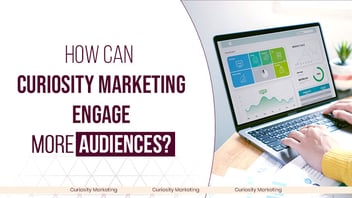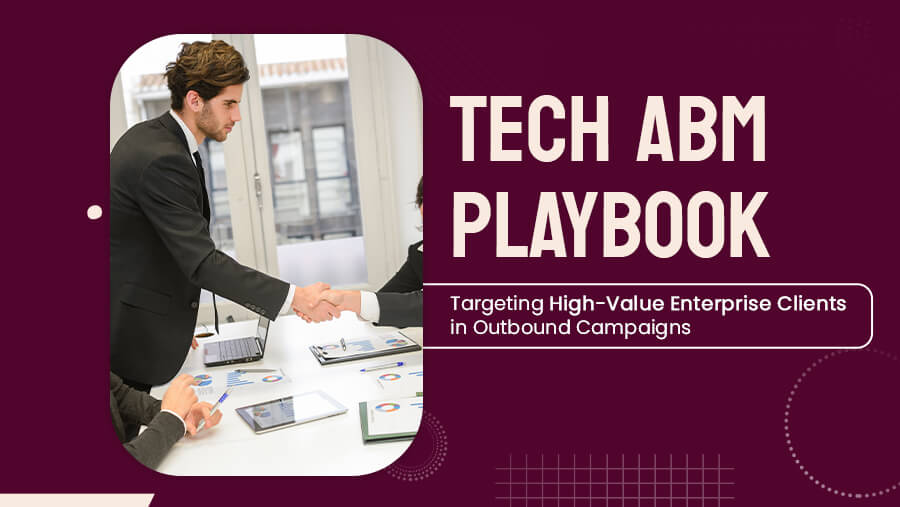
Tech ABM Playbook: Targeting High-Value Enterprise Clients in Outbound Campaigns
What if your next outbound campaign didn’t just generate leads, but secured you a seat with high-value enterprise clients who need exactly what you offer?
In a landscape where only 3% of initial outreach messages lead to sales meetings, Account-Based Marketing (ABM) flips the script, enabling tech companies to cut through the noise and connect with decision-makers who matter.
For those ready to prioritize impact overreach, ABM offers a targeted, data-driven approach to build relationships and win over top-tier clients. Let’s dive into how you can leverage ABM to take your outbound campaigns—and your revenue growth—to the next level.
1. Why ABM is Essential for Targeting High-Value Enterprise Clients in Tech
Targeting high-value enterprise clients in the tech industry comes with unique challenges that traditional marketing tactics may struggle to address. ABM enables tech companies to navigate these challenges by focusing on accounts with the highest revenue potential and providing personalized outreach.
The Need for ABM in Tech B2B Marketing
Tech companies targeting large enterprises face longer sales cycles, more complex buying processes, and higher client expectations. ABM enables tech firms to focus on accounts with the highest potential by delivering personalized outreach that addresses specific pain points and aligns with each client's unique goals.
ABM’s Impact
ABM consistently outperforms other B2B marketing tactics. According to a survey by ITSMA, 87% of B2B marketers say ABM delivers higher ROI compared to other marketing approaches. This is crucial for tech companies aiming to build long-term relationships with enterprise clients.
Challenges with Traditional Outbound Marketing
Mass messaging often fails with enterprises that expect personalized interactions. ABM solves this by enabling a focused approach on fewer, high-value accounts, ensuring that each interaction is relevant and impactful.
2. Define Your High-Value Target Accounts
Before launching an ABM strategy, it is essential to define and identify your high-value target accounts. This involves examining key factors like company size, revenue potential, and the organization’s technology infrastructure.
By understanding these characteristics, you can better tailor your outreach to match their needs.
Criteria for High-Value Enterprise Clients in Tech
Identifying high-value accounts begins with examining company size, revenue potential, technology infrastructure, and industry alignment. Tech companies might target organizations that are investing heavily in digital transformation and innovation.
%20Criteria%20for%20Tech%20ABM.jpg?width=1758&height=844&name=Ideal%20Customer%20Profile%20(ICP)%20Criteria%20for%20Tech%20ABM.jpg)
Tools for Account Selection
Tools like LinkedIn Sales Navigator, ZoomInfo, and Clearbit are invaluable for uncovering insights into potential accounts. These platforms allow you to identify key details about an organization, making it easier to target accounts that meet your Ideal Customer Profile (ICP).
Building an Ideal Customer Profile (ICP)
The ICP is crucial for identifying high-value accounts. Tech companies should define an ICP based on revenue, employee count, technology stack, and industry-specific needs, as shown in the table above.
3. Build Your ABM Outbound Strategy for Tech Enterprise Clients
Once you’ve identified your target accounts, the next step is to structure your ABM strategy. ABM campaigns can be tiered based on the degree of personalization required, from one-to-one approaches for top accounts to one-to-many strategies for broader segments.
ABM tiers help you tailor outreach based on the type and number of accounts you’re targeting. The level of personalization varies with each tier to align with the potential value of the account.

Multi-Channel Outbound Outreach
An effective ABM strategy in outbound marketing leverages multiple channels to maximize touchpoints. Here’s a look at some key channels:
- Email Marketing: Personalized emails that highlight enterprise-specific challenges.
- Social Selling: LinkedIn and other platforms to engage with decision-makers.
- Direct Mail and Gifting: Thoughtful direct mail (like a book on industry trends) can create a memorable touchpoint.
Timing and Sequencing in Outbound ABM

4. Craft Personalized Messages for High-Value Prospects
Personalization is the cornerstone of any ABM strategy. By addressing each prospect’s unique needs and challenges, you create messaging that resonates deeply, rather than relying on generic templates.
Understanding what matters most to your target accounts will enable you to tailor your value propositions effectively.
Understand the Pain Points of Enterprise Clients in Tech
Tech enterprises often face challenges like data security concerns or scalability issues. Your messaging should resonate with these pain points and clearly demonstrate how your solution addresses them.
Value Proposition Tailoring
Different decision-makers within an organization have different priorities. Tailoring your value propositions to the unique interests of each role can make your outreach more compelling.
- CIOs: Emphasize security and scalability.
- CFOs: Highlight cost-efficiency and ROI.
- IT Directors: Focus on ease of integration and time-to-value.
Use Data for Personalization
Data-driven insights allow you to customize outreach for each account. For example, if a company is amidst rapid growth, you can showcase how your solution supports scalability in your messaging.
5. Technology Stack for ABM in Outbound Campaigns
An effective ABM strategy is built on a strong tech stack that supports all campaign stages, from account selection to outreach and analytics. The right tools enable seamless execution, tracking, and personalization at scale.

IntegrateTech with ABM Strategy
Integrating your CRM with ABM platforms and marketing automation tools allows you to create a seamless flow that tracks interactions, measures engagement, and personalizes outreach based on behavior.
6. Measure Success: KPIs for ABM in Outbound Marketing

Comparing ABM Metrics to Traditional Marketing Metrics
Unlike traditional metrics like click-through rates, ABM focuses on engagement at the account level. Metrics like account engagement rate and pipeline generated offer a more direct view of ABM’s impact.
7. Overcoming Common Challenges in ABM for Outbound Campaigns
ABM campaigns can encounter challenges, from resource allocation to engaging diverse stakeholders. By planning for these obstacles, you can ensure your ABM strategy is as effective as possible.

Engaging the Buying Committee
Multi-threading is essential for engaging various stakeholders within an account. Tailoring content to each role can improve results, as different decision-makers have different priorities. For example, CIOs may prioritize security, while IT managers focus on ease of integration.
Adjusting Tactics Based on Feedback
An agile approach to ABM is essential. You can make real-time adjustments to your campaign strategy by closely monitoring engagement metrics. Low response rates signal a need to refine your messaging or outreach channels to better resonate with your target accounts.
8. Best Practices and Real-World Examples
A leading cloud provider recently implemented an ABM strategy targeting Fortune 500 companies, resulting in a 50% increase in deal size by aligning outreach to the specific needs of each organization. This case study underscores the importance of hyper-personalization in successful ABM.
Best Practices Recap
ABM's success hinges on a few essential practices:
- Hyper-Personalization: Customize outreach based on each account’s unique needs and goals.
- Leverage the Right Tools: Equip your team with the technology that supports your ABM efforts.
- Data-Driven Adjustments: Continuously refine your approach based on performance metrics.
These best practices ensure that your ABM efforts are not only scalable but also highly targeted and impactful.
Conclusion
ABM provides tech companies with a powerful approach to building long-term, high-value relationships with enterprise clients. By identifying the right accounts, implementing a well-structured multi-channel strategy, and measuring engagement at every step, you can execute an ABM strategy that enhances client relationships and drives significant revenue growth.
Embrace ABM to take your outbound marketing to the next level and transform your campaigns today.

.jpg?width=60&name=deepti%20(2).jpg)


